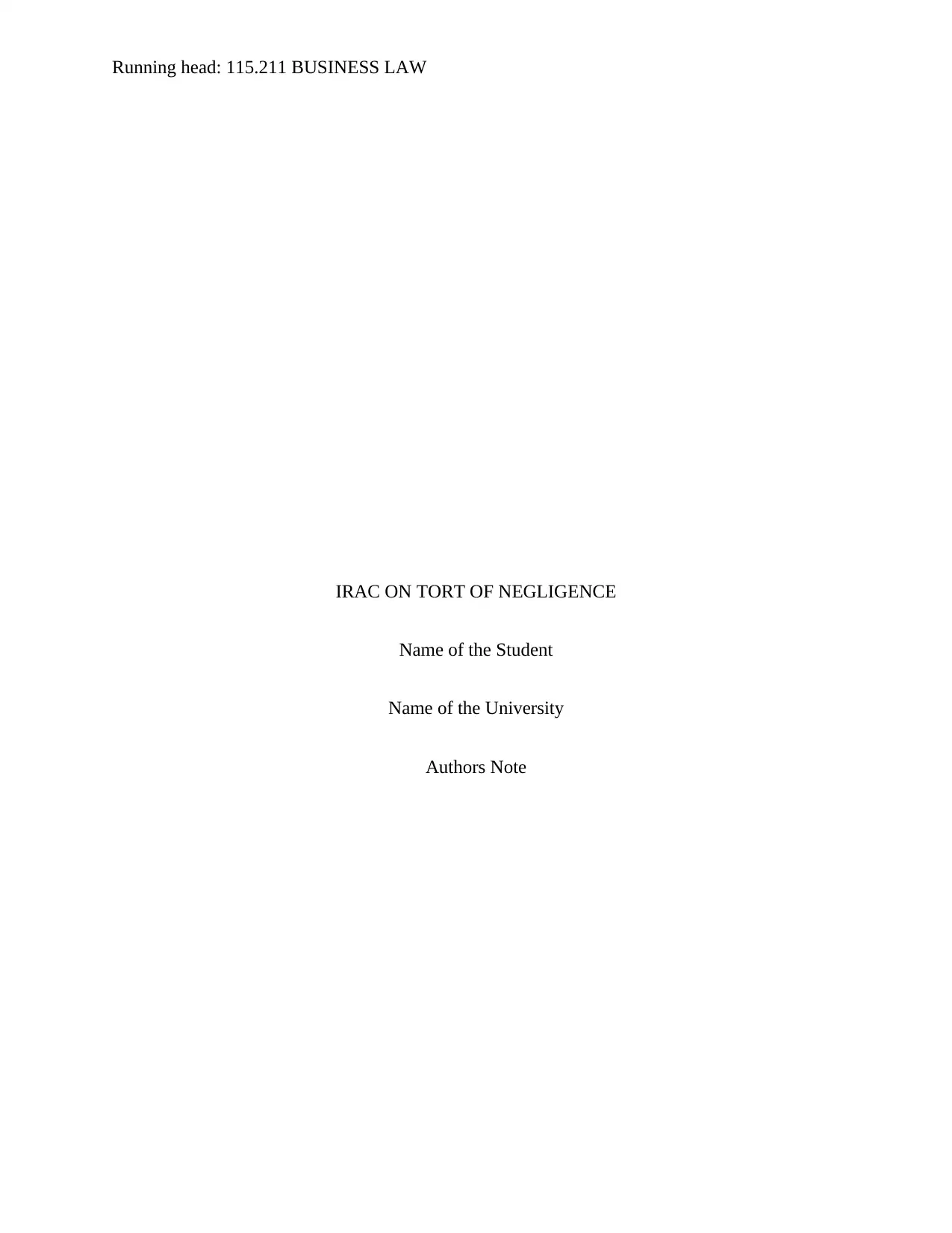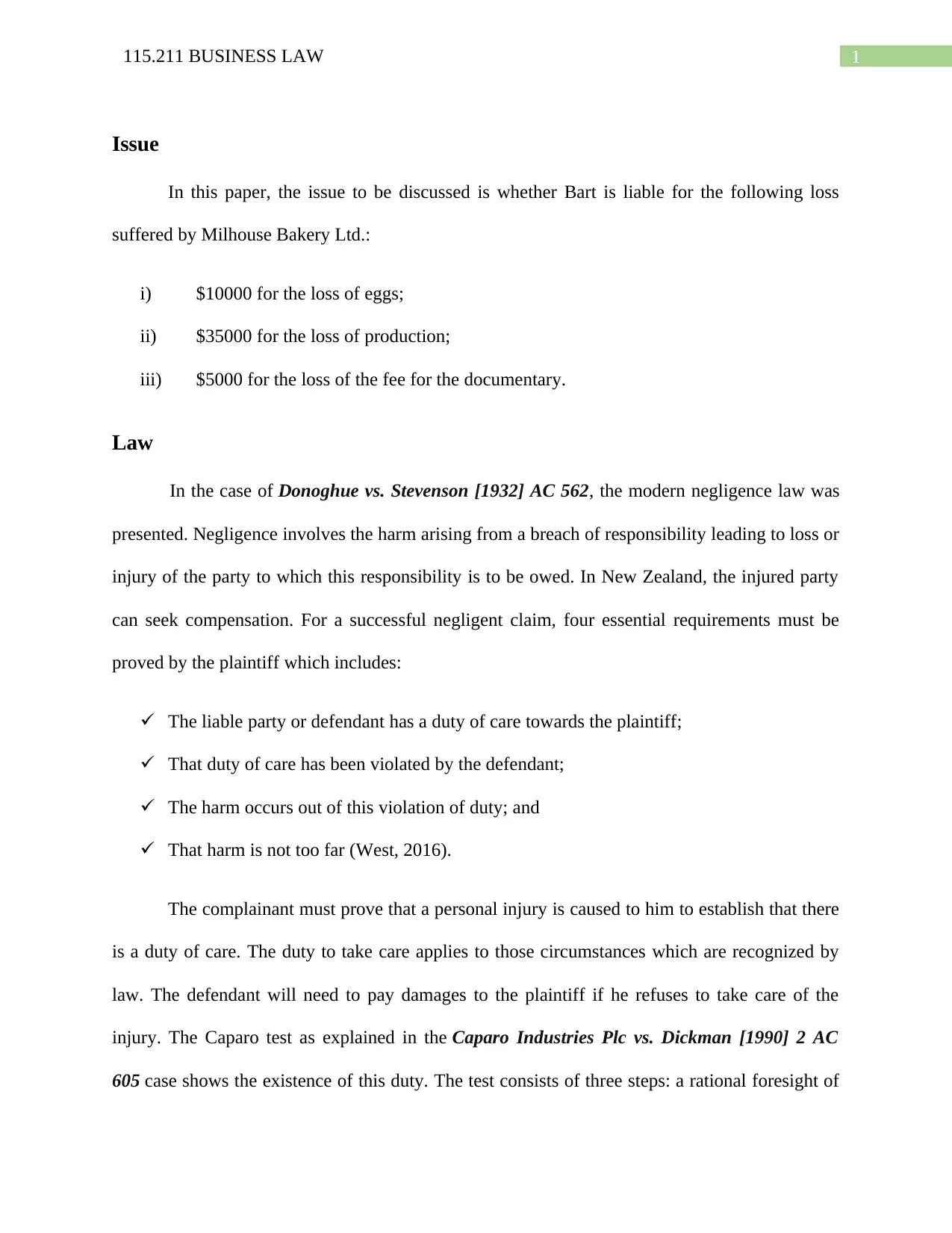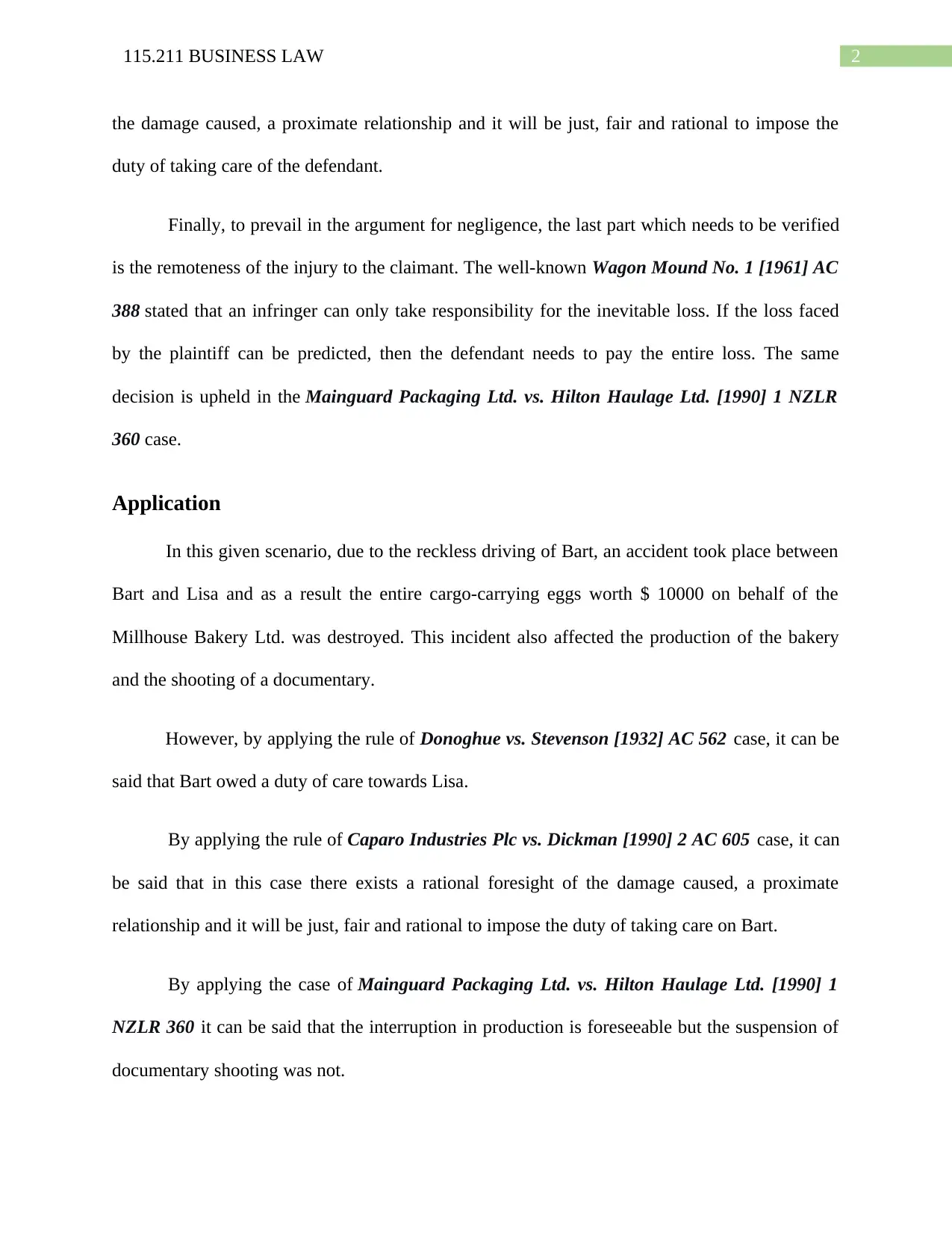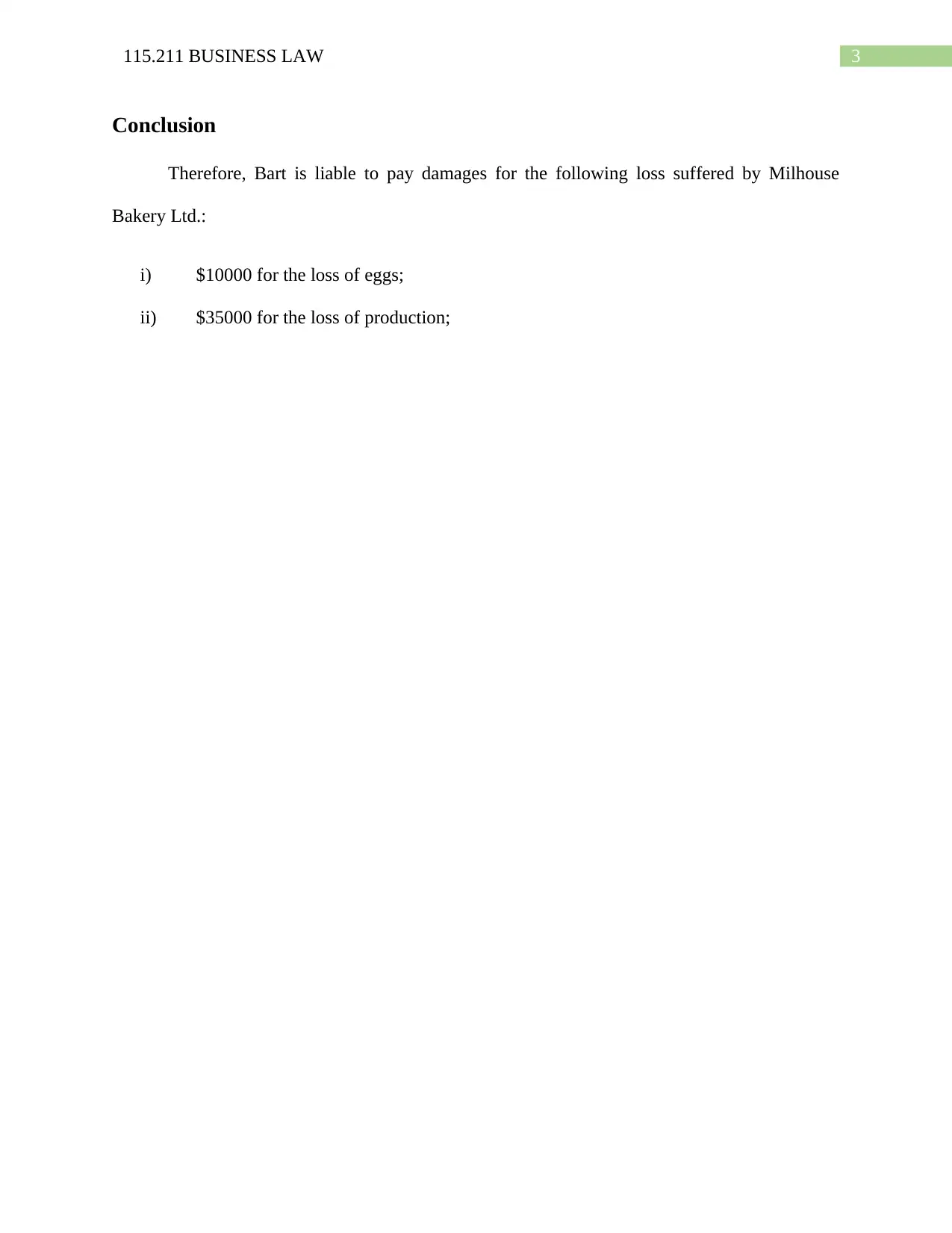University Business Law Assignment: Negligence and Tort
VerifiedAdded on 2022/09/23
|5
|726
|36
Homework Assignment
AI Summary
This document presents a business law assignment analyzing the tort of negligence. The assignment utilizes the IRAC method to examine a scenario involving a car accident caused by reckless driving. It explores the legal principles of negligence, including the duty of care established in Donoghue vs. Stevenson, and the Caparo test. The analysis considers the foreseeability of damages and the remoteness of injury, referencing cases like Wagon Mound No. 1 and Mainguard Packaging Ltd. vs. Hilton Haulage Ltd. The conclusion determines the liability for damages, including the loss of eggs, production, and documentary fees suffered by Milhouse Bakery Ltd. The assignment also provides context on torts, vicarious liability, and damages, including compensatory and exemplary damages, as outlined in the assignment brief.
1 out of 5












![[object Object]](/_next/static/media/star-bottom.7253800d.svg)